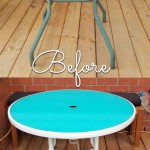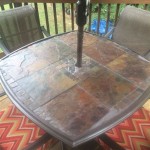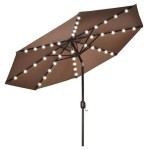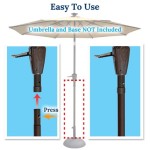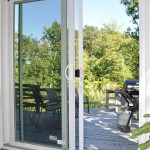Roller Blinds for Patio Windows: A Comprehensive Guide
Patio windows, often expansive and designed to maximize natural light and views, present unique challenges and opportunities when it comes to window coverings. Roller blinds have emerged as a popular and practical solution for these spaces, offering a blend of functionality, aesthetics, and ease of use. This article explores the various aspects of roller blinds for patio windows, covering their benefits, types, material options, installation considerations, and maintenance tips.
The primary function of window coverings is to control light and privacy. Patio windows, due to their size, can inundate a room with sunlight, potentially leading to glare, heat gain, and fading of furniture. Conversely, at night, they can offer a clear view into the home, compromising privacy. Roller blinds provide a simple yet effective mechanism to manage these issues. By adjusting the blind, one can precisely control the amount of light entering the room, reduce glare on screens and surfaces, and maintain privacy from outside observers. The ability to fully retract the blind also allows for unobstructed views when desired.
Beyond functionality, roller blinds contribute significantly to the aesthetics of a room. Available in a wide range of colors, patterns, and textures, they can be tailored to complement any décor style. From minimalist designs to bold statements, roller blinds offer versatile design options. The clean lines and streamlined appearance of roller blinds also make them a suitable choice for modern and contemporary spaces. Furthermore, the ability to customize the fabric and hardware allows homeowners to create a personalized look that reflects their individual taste.
Benefits of Choosing Roller Blinds for Patio Windows
Roller blinds offer a multitude of advantages making them an ideal choice for patio windows. These benefits extend beyond simple light control and privacy, impacting energy efficiency, maintenance, and overall convenience.
One significant advantage is energy efficiency. Roller blinds can help regulate the temperature inside a room by reducing heat gain in the summer and heat loss in the winter. This is particularly important for patio windows, which are often large and can contribute significantly to energy consumption. By blocking direct sunlight in the summer, roller blinds prevent the room from overheating, reducing the need for air conditioning. Conversely, in the winter, they can help insulate the window, preventing heat from escaping and lowering heating costs. Certain types of roller blinds, such as those with reflective backings, are specifically designed to maximize energy efficiency.
Another key benefit is the ease of maintenance. Roller blinds are relatively easy to clean and maintain compared to other types of window coverings, such as drapes or shutters. Regular dusting with a dry cloth or vacuum cleaner attachment is usually sufficient to keep them clean. For more stubborn stains, a damp cloth with mild soap can be used. The simple design of roller blinds also means that there are fewer parts to break or malfunction, reducing the need for repairs. This low-maintenance nature makes them a practical choice for busy households.
Durability is another notable advantage. High-quality roller blinds are made from durable materials that can withstand the wear and tear of daily use. They are resistant to fading, tearing, and warping, ensuring that they will last for many years. This is particularly important for patio windows, which are often exposed to direct sunlight and extreme temperatures. Choosing roller blinds made from UV-resistant materials can further extend their lifespan and prevent them from becoming brittle or discolored over time.
Types of Roller Blinds Available
The market offers a diverse range of roller blinds, each with its unique features and functionalities. Understanding the different types of roller blinds is crucial for making an informed decision based on specific needs and preferences. The primary distinctions lie in their fabric type, operating mechanism, and additional features.
Standard roller blinds are the most common type, featuring a single layer of fabric that rolls up and down around a cylindrical tube. These are typically the most affordable option and are available in a wide range of colors and patterns. They offer basic light control and privacy but may not be as effective at blocking out all light or providing insulation as other types of roller blinds.
Blackout roller blinds are designed to completely block out light, making them ideal for bedrooms, home theaters, or any space where complete darkness is desired. These blinds are made from a thick, opaque fabric that prevents light from passing through. They often have side channels or seals to further minimize light leakage around the edges of the window.
Solar roller shades, also known as sunscreen roller shades, are designed to filter sunlight while preserving the view to the outside. These blinds are made from a woven fabric that allows some light to pass through, reducing glare and UV radiation while still allowing natural light to enter the room. They are a good option for rooms where maintaining the view is a priority, such as living rooms or dining rooms.
Dual roller blinds, also known as day and night blinds, consist of two layers of fabric: one sheer and one opaque. This allows for maximum flexibility in light control and privacy. The sheer layer can be used during the day to filter sunlight and maintain the view, while the opaque layer can be used at night for complete privacy and light blockage. These blinds are a more sophisticated and versatile option compared to standard roller blinds.
Material Options and Considerations
The choice of material for roller blinds significantly impacts their performance, durability, and aesthetics. Various materials are available, each with its own set of advantages and disadvantages. Selecting the right material is crucial for ensuring that the roller blinds meet the specific needs of the space.
Polyester is a popular choice for roller blinds due to its durability, affordability, and ease of maintenance. It is resistant to fading, shrinking, and stretching, making it a good option for high-traffic areas or rooms exposed to direct sunlight. Polyester is also relatively easy to clean and maintain. However, it may not be as effective at blocking out light as other materials, such as blackout fabrics.
Vinyl is another common material for roller blinds, particularly in bathrooms and kitchens due to its water resistance. It is also easy to clean and maintain. Vinyl blinds are often less expensive than other types of blinds but may not be as aesthetically pleasing or durable as higher-end materials. They can also become brittle and crack over time, especially in extreme temperatures.
Solar screen fabrics are specifically designed to filter sunlight while preserving the view. These fabrics are typically made from a woven blend of polyester and PVC. They are available in a range of openness factors, which determine the amount of light that is allowed to pass through. A lower openness factor means less light transmission and greater UV protection. Solar screen fabrics are a good option for rooms where maintaining the view and reducing glare are priorities.
Natural fabrics, such as cotton, linen, and bamboo, offer a more organic and textured look. These materials can add warmth and character to a room. However, they may not be as durable or easy to maintain as synthetic materials. Natural fabrics are also more susceptible to fading, shrinking, and staining. They may require special cleaning and care to maintain their appearance.
Blackout fabrics are designed to completely block out light. These fabrics are typically made from a dense, opaque material, such as coated polyester or vinyl. They may also have multiple layers or a reflective backing to further enhance their light-blocking capabilities. Blackout fabrics are ideal for bedrooms, home theaters, or any space where complete darkness is desired.
Consideration of the material's impact on insulation is also important. Thicker materials or those with specialized coatings can offer better insulation, helping to reduce energy costs. Reflective backings can also help to reduce heat gain in the summer and heat loss in the winter.
The selection of roller blinds for patio windows involves a careful evaluation of factors ranging from functionality and aesthetics to material properties and installation considerations. By understanding the benefits, types, and options available, homeowners can make informed decisions that result in optimal light control, privacy, and energy efficiency for their living spaces.

Buy Custom Outdoor Roller Shades For Patio Get Up To 30 Off Covers All

Know How Do You Want To Dress Your Patio Doors

Seasun Surfside Cream Cordless Outdoor Patio Roller Shade With Valance 72 In W X 96 L Sst 30 6 The Home Depot

Patio Door Blinds Ideas 2024 Checkatrade

What Blinds Look Good On Patio Doors English

Door Blinds For Sliding Glass Doors French

How To Install Blinds On A Sliding Glass Door Blindsgalore Blog

11 Window Treatments For Sliding Glass Doors

Patio Door Blinds And Shutters Luxaflex Co

Patio Door Blinds And Shutters Luxaflex Co
Related Posts

